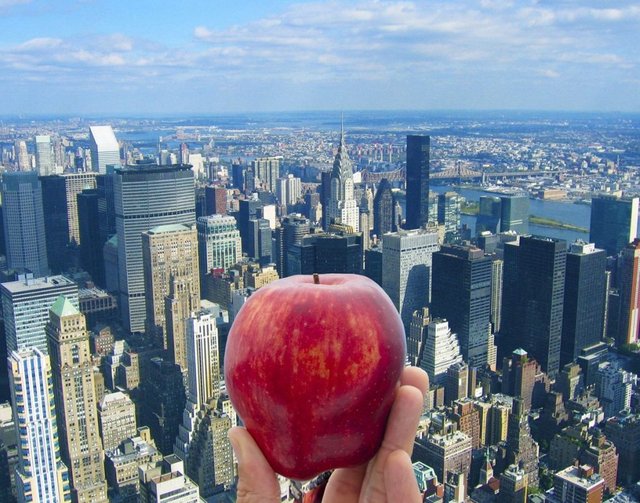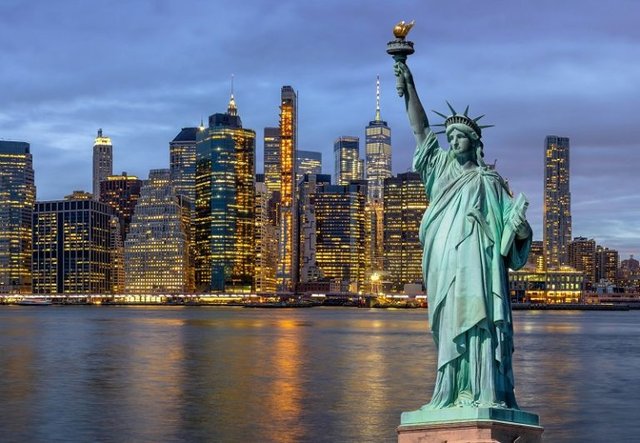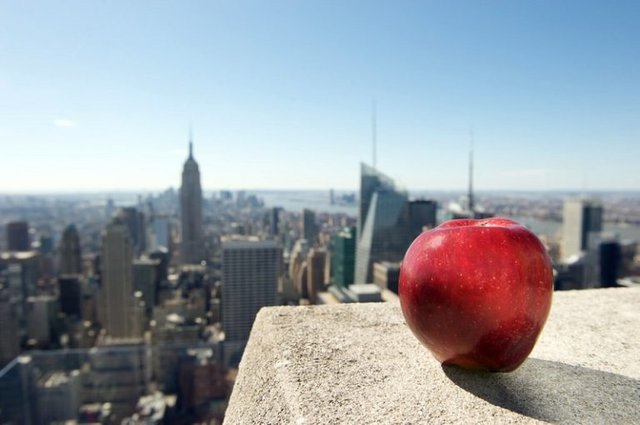Why is New York City called the Big Apple?

New York, the most populous city in the USA, has been called by many nicknames and nicknames, including the city that never sleeps, Empire City, Gotham, but perhaps the most famous nickname for the city is the Big Apple!
The nickname "Big Apple" originated in the 1920s in reference to the trophies or "big apples" that were rewarded at the many racing courses in and around New York City.
However, the name was not officially adopted as a city nickname until 1971 as a result of a successful advertising campaign aimed at attracting tourists.
Throughout its history, the term "big apple" has always been associated with the best and biggest of places, and New York City has always lived up to its nickname.
Once you visit this 11 km city, you will truly understand why it is called the capital of the world and the Big Apple.
The Big Apple, New York, describing novelists and jazz musicians

The first mention of New York as "The Big Apple" was in 1909 in the book "A Passerby of New York". In the preface, Edward Martin writes about the dynamic between the city and the Midwest, using the apple as an extended metaphor.
The term began gaining popularity when sports writer John J. Gerald Fitz began writing about horse racing in the city for the New York Morning Telegraph. In his column, he wrote that these are the "big apples" of competitive racing in the United States.
Although the audience for Fitzgerald's articles was small, the concept of the "big apple" began to spread across the country.
In the late 1920s and early 1930s, the nickname began to become popular outside the Northeast, as New York City jazz musicians began referring to the city as the "Big Apple" in their songs.
In show business, there was a saying: “There are many apples on a tree, but there is only one big apple.”
The city remains the number one favorite place for jazz musicians to perform, which has made it popularly referred to as the "Big Apple".
The notoriety of the Big Apple

In the late 1960s and early 1970s, New York City gained notoriety as a dark and dangerous city. To increase tourism, in 1971 the city launched an advertising campaign with Charles Gillette, president of the New York Convention and Visitors Bureau, at the helm.
The campaign featured red apples in an attempt to attract visitors to the city. Red apples intended to present a bright and cheerful image of the city, stand in contrast to the common belief that New York is riddled with crime and poverty.
T-shirts, brooches and posters promoting the "big apple" quickly became popular, thanks in part to the help of celebrities in the city.
Since the end of the campaign, New York has been officially nicknamed "The Big Apple". In honor of Fitzgerald, Corner 54 and Broadway (where Fitzgerald lived for 30 years) were renamed "Big Apple Corner" in 1997.